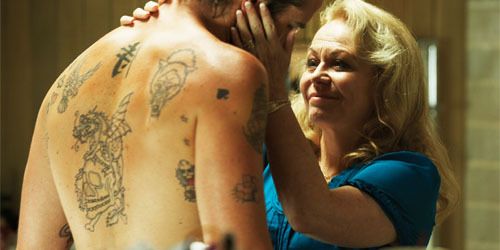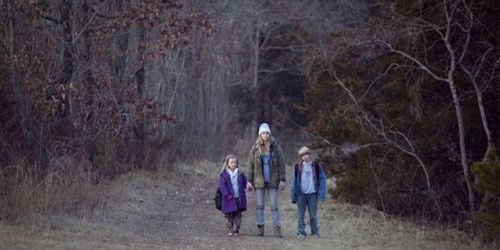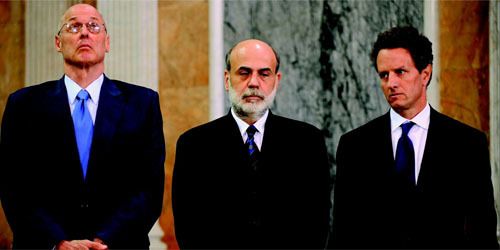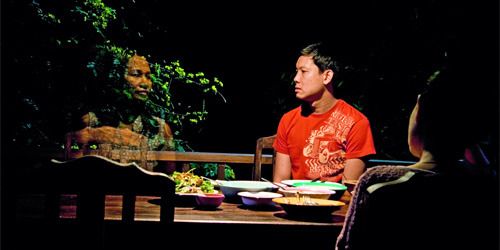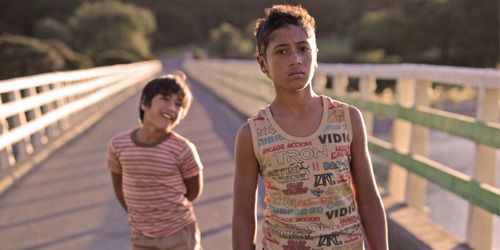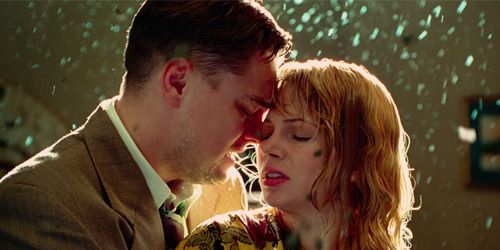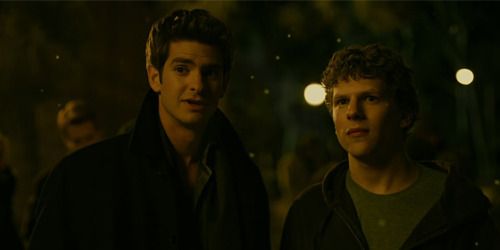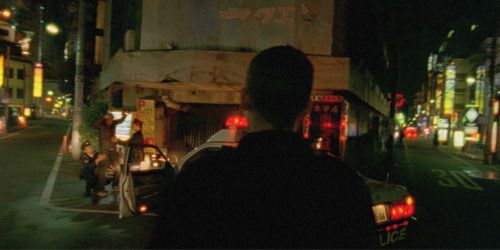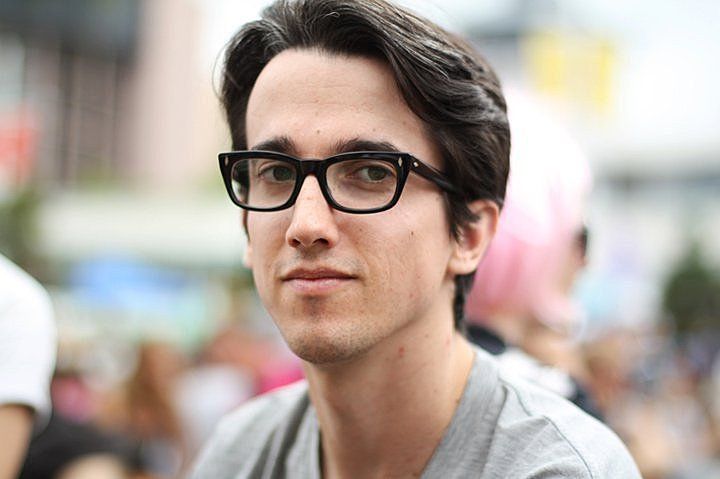Ten Films I Loved in 2010
10. Animal Kingdom (David Michôd, Australia)
First-time director David Michôd has made one of the best Australian dramas since 2006’s Candy. Set in 1980s Melbourne and based largely on real events, Animal Kingdom is a simmering, taut thriller that is expertly written, stylishly filmed, and brilliantly well-acted. The protagonist is an inert, almost autistic young man in his late teens. When his mother dies of a drug overdose, he moves in with his grandmother (Jacki Weaver) and his extended family of criminals and jailbirds.
As the film progresses, Josh, or ‘J’ as he’s nicknamed, is caught between a largely corrupt police force—save for Guy Pearce’s detective, possibly the only person who can help J out of his downward spiral—and a family who want him to not only abide but protect and become an accessory to their criminal activities. Formally, the film is brilliant: the cinematography is as grittily dark as the subject matter, and the economic use of music—often mixed with other sound effects such as low, drone-like reverberations—nicely augments the scripted mood. The film’s over-reliance on slow-motion montage sequences is initially off-putting, but by film’s end becomes a welcome stylistic flourish, particularly in one Matrix-esque shot inside a van that feels so awesomely unrealistic that it must have been a figment of the protagonist’s dampened imagination. J’s navigation of the criminal underworld and the almost equally-corrupt police force is what makes the film so entertaining; in the best way possible, this lingers in your mind long after you’ve seen it.
9. Winter’s Bone (Debra Granik, USA)
Debra Granik’s new film is an incredibly bleak, chilling story that’s part murder-mystery, part drama and part social commentary. Based on the novel by Daniel Woodrell and set in the desolate, unforgiving Ozark woods in Missouri, the film centres on a 17-year-old girl who, after her meth-addict father goes missing, is left to care for her two younger siblings and her sick mother, who is unwell to the point of being basically mute and all but incapacitated. Moreover, she sets out to track down her dad—a journey which is tougher than it should be because not only does no one want to help her find him, but they want to actively—and sometimes brutally—stop her from finding him. His disappearance becomes the fascination not only of his extended kin but of the local law enforcement, who plan to evict the now fatherless family from their home.
Granik’s previous film was 2004’s Down to the Bone, which, in the character of a mother trying to kick a drug habit, introduced the fantastically talented actress Vera Farmiga. Apart from extremely similar titles, the two films share a rawness and an deep investment in exposing the troubles of the downtrodden that isn’t shown much in cinema—save rarely for a film like Lance Hammer’s 2008 film Ballast, which chronicled the impact of a suicide on the lives of a semi-rural black community in the Mississippi delta.
The cinematography perfectly captures the barren landscape at its most devastating. In the lead role is a prodigiously gifted young actress by the name of Jennifer Lawrence; hers is one of the finest performances of the year—and she’s surrounded by an array of other brilliant actors, including John Hawkes (Me and You and Everyone We Know). Finally, as if the near derelict settings and intensely wrought performances weren’t already enough, the film contains a scene a thousand times more grizzly than the wood-chipper scene in Fargo.
8. Io Sono Amore (I Am Love) (Luca Guadagnino, Italy)
Luchino Visconti’s The Leopard and Alfred Hitchcock’s Vertigo are just two films that Luca Guadagnino references in his exquisite, delectable masterpiece I am Love. Tilda Swinton, in a truly stunning performance and speaking very good Italian, stars as the Russian-born wife of the heir to a Milanese textile fortune. When she married into the haute bourgeois Recchi family, she all but abandoned her past, going as far as to change her name to Emma. Seduced both literally and gastronomically by a charming young chef—an acquaintance of her son’s—she begins an affair that will end in tragedy. A parallel plot-line involves her daughter’s dalliances with infidelity, and the film also stars Waris Ahluwalia—best known as the Indian character in several of Wes Anderson’s films—in a witty, wry turn as a business consultant.
The photography is exceptional. From the gigantic family mansion in Milan to the chef’s hilltop hideaway in Sanremo, every detail—not just in faces and architecture but in clothing and food, too—is pored over and devoured: both Epicureans and the sartorially-inclined are catered for in abundance. Yorick Le Saux’s cinematography here recalls Harris Savides’ work on Jonathan Glazer’s 2004 film Birth, which, like I am Love, is set mostly in a large snowy city and examines covert infidelity and a woman’s uncontrollable, unbridled passion overflowing to disrupt family dynamics. Like James Gray’s Two Lovers, a film with which I am Love shares a romanticism and classical air, Guadagnino’s camera observes the way characters compose themselves in rooms, around furniture, entrances and hallways, their body language saying almost as much as their dialogue.
Equal to the stunning visuals is the film’s soundtrack; this is only the second feature film to utilise the striking, atmospheric compositions of the American minimalist John Adams. The aforementioned Hitchcockian echoes are embiggened in the film’s final section by an extract from “Harmonielehre” (German for “harmony”) which—coupled with the camera’s pensive yearning to look up at bell towers, and Swinton’s Madeline-like hairdo in a previous scene—almost seems to invoke the spirit of Bernard Hermann’s score for Vertigo. The only other notable use of music is the inspired employment of the Elliott Smith song “Pretty (Ugly Before),” refracted through a character’s iPod ear-buds. Although for the most part it takes itself seriously, the film is wonderfully vibrant and lively, and manages at several points to venture into experimental territory—the only point at which it risks running off the rails—while also incorporating enormous, sweeping, almost classical shots and camera movements. This is a melodrama so perfectly appointed at every turn that you wish, like the nearly orgasmic cuisine ogled and consumed throughout the film, you could just swallow it up.
7. Inside Job (Charles Ferguson, USA)
The most important non-fiction film of the year. A brilliant, incisive documentary that exposes the greed-clogged heart of the financial crisis: the banking industry’s so-powerful-it-oughta-be-illegal influence on Capitol Hill. Directed by Charles Ferguson—whose previous film No End in Sight examined the widespread ineptitude and officially-sanctioned wilful criminality leading up to and during the Bush administration’s invasion of Iraq—the film is, thankfully, not as boorish or bluntly-delivered as was Michael Moore’s Capitalism: a Love Story. Where the buffoonish Moore pleaded ignorance and goofily accosted Wall St. traders, asking them to explain how a derivative works in a thirty-second sound-bite as they were leaving work at the end of the day, Ferguson calmly explains, with the aid of simple animated info-graphics, such heretofore relatively mysterious buzz-words as “credit default swaps,” the “sub-prime” mortgage crisis and the trading of complex financial instruments in clear, simple language.
The film is divided into five sections which roughly run through how, why and when the crisis started; what actually happened in 2008; what happened in the aftermath of the bailouts (the bankers actually collected bonuses after completely failing at their jobs and screwing the economy); and what the Obama administration are doing about it now (not much—for one, Larry Summers is still lurking around the corridors of power). The film is similar in a way to last year’s The Cove, at least inasmuch as it’s a jarring wake-up-call that also happens to be incredibly entertaining. Moore’s film on the other hand, far from being a wake-up call, was a relative snooze-fest punctuated every so often by melodramatic bank foreclosure sob-stories—an arena Ferguson wisely side-steps altogether. The crisis is about people losing their homes, sure, but not only are the economic facts more interesting, they’re also less manipulative. Instead of people crying about losing their houses, Ferguson opts for far more entertaining stories: ones about cocaine and hookers. (See also: the closing titles of Adam McKay’s buddy-cop spoof comedy The Other Guys.)
6. Lung Bunmi raluek chat (Uncle Boonmee Who Can Recall His Past Lives)
(Apichatpong Weerasethakul, Thailand)
Sometimes the best films are the most difficult to write about, especially if you’ve only had the opportunity to see them once. I found Uncle Boonmee, which only screened on one night in August in a belated coda to the NZIFF, to be one of those films. Weerasethakul’s film won the Palme d’Or at Cannes this year, and has been entered as Thailand’s selection for the Best Foreign Film Oscar at the 83rd ceremony in February, an award it has absolutely zero chance of winning. The film is essentially a two-hour thanatopsis, a Bhuddist tone poem about innumerable possible prior lives. It does indeed concern a man named Boonmee—his liver is failing and he’s returned on his farm in north-eastern Thailand to live out his final days. At one point the ghost of his dead wife fades into the picture so subtly she looks like part of the set furniture.
His long-lost son turns up looking like an extra-dark Chewbacca with pink-eye. Some of Boonmee’s past lives could be the buffalo at the start of the film that looses itself from its shackles and clomps off into the dense, wet jungle—or the catfish who, in a magical sequence the middle of the film, copulates with a princess with a disfigured face. But the film isn’t all fantasy: there are moments of political commentary amidst all this heady, fantastic reverie, albeit ones I didn’t understand because I’m not at all familiar with Thai politics. The most I know is that Weerasethakul is a controversial filmmaker in his homeland, and that, for the few screenings they receive, most of his films are in some way censored by the government. This is a film that will ultimately be quite baffling to a lot of moviegoers, not least because it doesn’t follow any sort of traditional narrative structure—though it’s certainly not anti-narrative. It is utterly beautiful, frequently laugh-out-loud funny, and completely mesmerising.
5. Exit Through the Gift Shop (“Banksy,” UK/USA)
No-one really knows who Banksy is. If you trust The Onion, the person doing all that satirical stencilled graffiti is actually a 98-year-old woman from Camden Town. Or he could be just some shady dude in a grey hoodie who helped give a California-based Frenchman his 15 minutes of fame. Whatever the case, this is a very funny, extremely well-constructed film. It begins with Banksy describing how he came to know Thierry Guetta, a second-hand clothing store owner in downtown LA.
A self-described videographer, Guetta had a penchant for obsessively documenting his own life—even down to quotidian activities like shaving every morning. He wanted to make a documentary about street art, and had already started interviewing local artists—but his most sought-after interviewee was Banksy. “He wanted to make a documentary about me,” says Bansky at film’s start, “but he was actually a lot more interesting than I am, so the film is actually about him…” Guetta had long been interested in outsider art and work that exists outside the bounds of the law. Many of the artists he filmed work illegally, spray-painting billboards they have no right to cover, tearing down subway posters and replacing them with parodical facsimiles, and so on.
Though what we see of Guetta’s documentary is interesting and entertaining, Exit Through the Gift Shop becomes better—and funnier—when the cameras turn on Guetta himself. Banksy tells Guetta he should set up his own art show—a piece of advice the Frenchman takes a little too seriously. Guetta begins planning a gargantuan exhibition under the name “Mr. Brainwash,” and commissions an army of freelance creative types to create a few hundred works of art. The first sign of bad luck is when Mr. Brainwash breaks his leg and has to wheel around chaotically barking orders at everyone. Things get more extravagant from there. A lot of very hip people take his ‘hip’ exhibition very seriously, and, all of a sudden, Mr. Brainwash has arrived, his adoring public gushing over what amounts to a gigantic collection of very derivative (Warholian/Banksy-esque) works.
Whether Banksy really made this film, or whether he’s even a real, single person or some sort of pseudo-anarchist artistic collective, we may never know. And whether Guetta is actually an artist, or whether the whole thing is a hoax, doesn’t matter: the fun lies in having the wool pulled over our eyes and laughing the whole way through.
4. Boy (Taika Waititi, New Zealand)
The year is 1984, and Boy, our simply-named protagonist—played with an outstanding naturalism by James Rolleston—is an 11-year-old obsessed, like many kids his age, with Michael Jackson. He lives in the semi-isolated community of Waihau Bay with his grandma, a couple of his cousins and his brother Rocky, who thinks he has magic powers.
His Dad, Alamein, has been away (in jail, actually, for robbery) for seven years, but he’s finally coming home, and he’s bought his gang, The Crazy Horses, with him. (The gang is actually just two of his mates.) But it turns out Alamein—played with verve and astute comic timing by Waititi himself—is actually only coming back home so he can find the cash he buried in a paddock when he was on the run from the cops, and get out of Waihau Bay forever. What he finds instead of the money, though, is a son whose idyllic memory of his father doesn’t match reality, and, with Boy’s mother not around (she died giving birth to Rocky), Alamein is forced to get to know his son from scratch, almost as a friend rather than his own offspring.
The journey of reconnection could easily have been saccharine or gratuitously dramatic in the hands of a lesser storyteller, but here it’s injected with equal measures of warmth and comedy. Like Colson Whitehead’s 2009 novel Sag Harbor, Greg Mottola’s Adventureland, and Richard Kelly’s sci-fi ode to ’80s adolescence, Donnie Darko, Boy accurately recreates and wonderfully romanticises its small-town period setting. But instead of New Coke, “Rock Me Amadeus” or Echo & The Bunnymen, the pop-culture artefacts embedded here are the seemingly globally-pervasive E.T., Michael Jackson’s Thriller, and—kiwiana lingering more quietly in the background—Billy T. James, “Poi E,” and the Goodnight Kiwi. The Phoenix Foundation, Prince Tui Teka, Herbs, various traditional Māori songs—and, of course, Michael Jackson—make up the soundtrack. The film is in fact lovingly dedicated to Jackson (“Shamon in peace”), plus there’s a brilliant sequence before the closing titles which combines “Poi E” and a haka with the dance moves, graveyard setting—and Vincent Price’s cackling laughter—of the “Thriller” video.
With Boy, Waititi establishes himself as New Zealand’s answer to Wes Anderson. He has the same homespun, quirky sensibility and impeccable comic timing: witness the hand-drawn animation sequences that occasionally take over the film’s frame and let us explore Rocky’s innermost thoughts, and idiosyncratic moments of offbeat humour fused with heartfelt tenderness, as when Alamein—with the help of one of his fellow gang members—props a ladder up to his son’s bedroom window to say goodnight. Waititi wears his heart on his sleeve, bringing a close, genuine warmth and an abundance of emotion to the screen, not only in the direction and camerawork, but in the performances he exacts from his actors. In some ways, Boy is a mashup of Two Cars, One Night and Eagle vs. Shark: the artistic flourishes of the former and the hilarious comic sensibility of the latter are blended with affecting emotional sincerity and imaginative storytelling to create something truly magical: Boy is, unequivocally, the best New Zealand film since Once Were Warriors.
3. Shutter Island (Martin Scorsese, USA)
BOSTON, 1954—At the height of the Cold War, two US Marshals are called to a mental hospital for the “criminally insane” on an island off the coast of Massachusetts to help locate a missing patient: a multiple murderess who somehow escaped from a completely sealed, locked room. One of the Marshals, played by Leonardo DiCaprio, a war veteran trying to get off the sauce, starts suffering migraines and hallucinations, and is plagued by flashbacks to the liberation of Dachau—while a ferocious storm approaches the isolated, windswept island like an H-bomb about to drop at any minute. As he and his partner (Mark Ruffalo) investigate the disappeared woman, they uncover ever more disturbing goings-on at the facility: experimental medical procedures, cover-ups, a negligent, malicious staff and a dictatorial head doctor—made all the more eerie by the fact that the facility is funded by the House Un-American Activities Committee.
This is Scorsese’s finest fiction film since Bringing Out The Dead. Scorsese’s genius here is in creating an instantly chilling, tense atmosphere, both visually and sonically: he enlisted Robbie Robertson of The Band to select modern classical pieces for the film, à la Kubrick’s selections for Barry Lyndon and The Shining—even down to the use of a piece by György Ligeti. From the stabby piano of John Cage’s Root of an Unfocus to the churning strings and siren-like horns of Krzysztof Penderecki’s third symphony, to the incomparable, darkly haunting beauty of a piece like Max Richter’s “On The Nature Of Daylight,” Robertson’s choices fit astoundingly well.
While Scorsese’s flashy camerawork occasionally gets away from him, overshadowing the narrative, it’s instrumental—along with the music—in creating the film’s frequently claustrophobic, oftentimes brilliantly schizophrenic climate. The film is expertly photographed: a hyper-real flashback sequence, all ramped-up contrast and beautifully saturated day-glo colours is far more stunning than anything in James Cameron’s Avatar. A truly stellar supporting cast takes the film to near-masterpiece levels. In short, Shutter Island is a beautiful thrill ride: it’s The Prisoner meets “The Island of Doctor Moreau”—except the monsters on this island are far more ‘mental’.
2. The Social Network (David Fincher, USA)
David Fincher and screenwriter Aaron Sorkin take a subject that might seem obtusely un-cinematic—the creation of a website—and work wonders with it. Jesse Eisenberg gives one of the best male lead performances of the year in his portrayal of Zuckerberg as an unflinching, unfeeling pseudo-automaton. As the film has it, Mark Zuckerberg is a social autistic, and Eisenberg—who is 26, the same age as Zuckerberg is now—conveys this perfectly. Owing in large part to Sorkin’s precise, dense dialogue, Eisenberg imbues Zuckerberg with an ominous, ambivalent faux-sincerity.
The Social Network is ultimately not about the new, but the old: the age-old need for recognition, companionship, and even love. The film starts with a disillusioned outsider plotting a way to be accepted by his betters, reaches its apex with him discovering a way to replace them and have each of us become king of his own castle, and ends with him, dismayed once again, begrudgingly requesting social acceptance—and an affirmation of his existence—from his ex-girlfriend. Zuckerberg takes “the entire experience of college” and puts it online because he doesn’t have the tools with which to navigate traditional social encounters, but also and primarily, as that old MAD magazine column goes, simply because he can. He reduces social experience to a set of variables, a singular commodity, in order to study and understand it.
1. Enter the Void (Gaspar Noé, France)
This is what celluloid feels like. Gaspar Noé’s epic film is a visually extravagant phantasmagoria; a unique cinematic experience. The story takes place in nocturnal Tokyo where a twentysomething American ex-pat is trying to save for a plane ticket so that his sister can come and live with him. As kids, they were very close and had made a blood pact never to leave one another, but they subsequently became separated and went through adolescence apart. The film is as close as the art of the moving image has yet come to an immersive full-body experience. Noé has called the film a “psychedelic melodrama,” but it’s really more than that: it grapples with a new way of telling stories on film. Enter the Void is an hallucinatory extravaganza which showcases a new type of cinematic world, a one-of-a-kind awe-inspiring blend of the filmic and the metaphysical.
See honourable mentions, etc. at my personal Tumblr.

